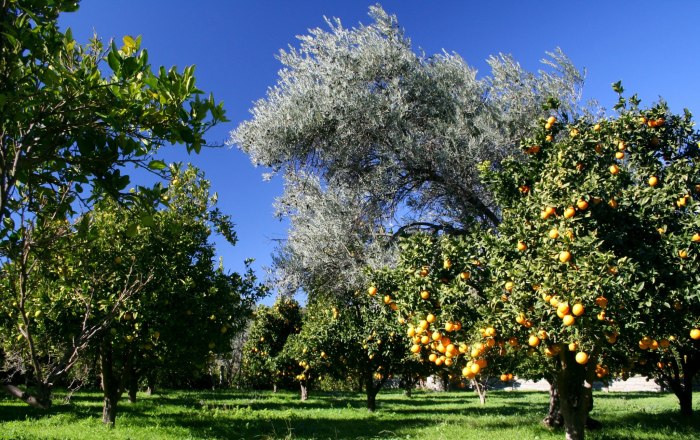In October and November the Lecrin Valley is a hive of activity, as the locals harvest and shell the almonds, gather fruit and tidy up their orchards. There’s that lovely smell of bonfires now that the fire ban has been lifted until next year.
This area has a great climate for fruit and veg. Most of the locals grow a selection of their own vegetables in their courtyards, on their rooftops or in little pockets of their orchards.
For a pretty small area, the Lecrin Valley has quite a varied climate – subtropical to the south of the area and colder in the higher mountain areas, where you’ll find cherries instead of oranges and lemons.
The temperature is not as hot as Granada, but hot enough; mild in the winter; not as damp as the coast, but with a decent amount of rain and water fed from the mountains via the acequias.
Hidden amongst the obvious oranges, lemons, olives and almonds at this time of year, you’ll find orchards or gardens bursting with avocados, apricots, quinces (membrillos), pomegranates (granadas), apples, nisperos, tangerines and grapefruit. Many of the local residents have a grapevine or two over their roof terrace or balcony and the roadsides are littered with cactus fruit…just don’t try to pick them without protection. You often can’t see the fine prickles, but you’ll definitely feel them!
Really if you go on a decent walk in the campo with a basket, you can just forage enough produce to keep you going for a very long time!
You’ll have plenty to keep you going throughout the autumn and the oranges, lemons, grapefruit and some avocados can pretty much last you through the entire winter if you’re lucky.
Nearer to Christmas you’ll find persimmons aka caquis, kakis or Sharon fruit. Yes they have lots of names – they’re a very confused fruit, which is probably why they’re a bit later than other fruit and don’t really know whether they’re ripe or not. Commercial growers have given up on them – they’re just too temperamental. Now they’re just in gardens – and mainly splattered on the ground! But they make great pies (treat them like pumpkin) and you can cut off the tops and freeze them to make a sticky caqui sorbet!
To learn more about Spanish gardening and fruit take a look at : http://thespanishgardener.blogspot.co.uk also http://www.foodsfromspain.com is great if you want to find out what things are.



























